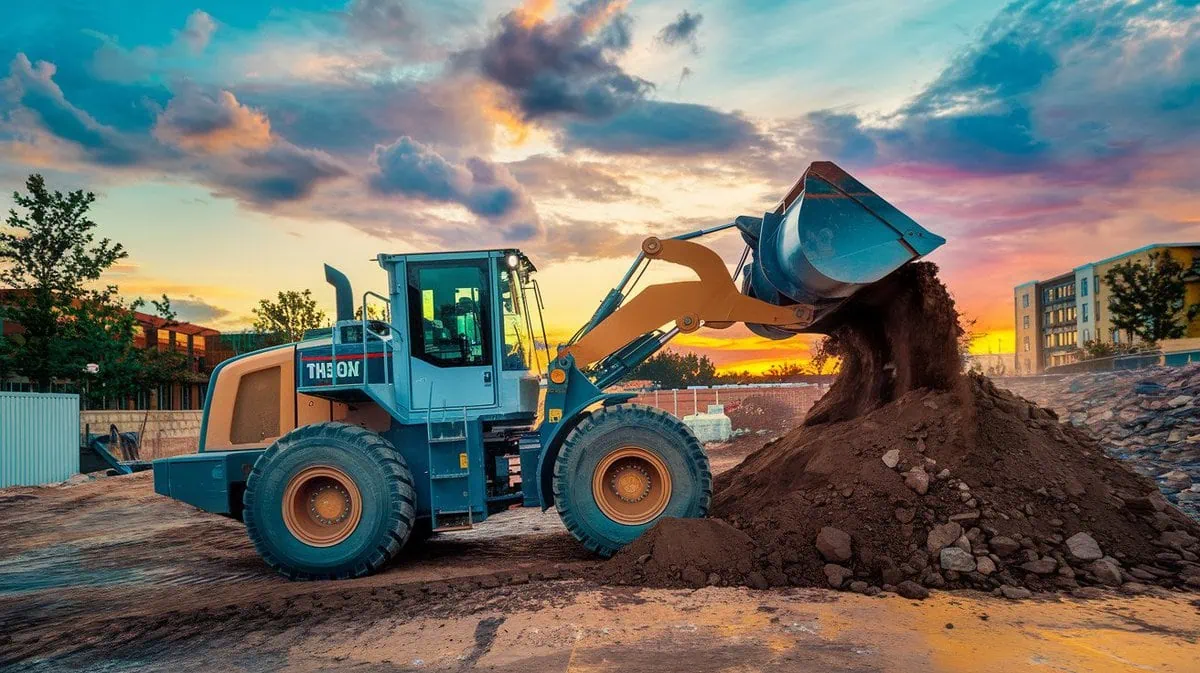To effectively choosing a used forklift, begin by evaluating your specific needs, inspecting the forklift’s condition, reviewing maintenance records, and considering the brand’s reputation. This careful assessment will help you find a reliable machine that meets your requirements and budget. Moreover, being informed about financing options can ease the purchase process, making it more accessible for your business.

Determine Your Needs when choosing a used forklift
Before you start looking for a used forklift, assess your specific operational requirements. Consider factors such as load capacity, lift height, and the types of materials you will be handling. If you primarily work in confined spaces, a compact forklift may be ideal. On the other hand, if you need to lift heavy loads to significant heights, ensure that the model you choose can accommodate those demands. Understanding your needs will help you narrow down your options effectively.
Inspect the Forklift’s Condition
Conduct a thorough inspection of the used forklift. Look for signs of wear and tear, including rust, leaks, and damage to the forks and mast. Inspect the hydraulic hoses and connections for any signs of deterioration. Pay close attention to the tires, ensuring they have adequate tread and are free from uneven wear, which could indicate alignment issues. A detailed inspection will help you gauge the overall condition of the forklift and its suitability for your operations.

Check the Hours of Use
Just like any machinery, the hours of operation can significantly affect the forklift’s longevity. Inquire about the total operating hours, as lower hours typically suggest less wear. However, it’s essential for you to consider how well the forklift was maintained throughout its use. A machine with a higher hour count that has been well-maintained may perform better than a lower-hour machine that has been neglected.
Review Maintenance Records
Request the maintenance history of the forklift. Regular servicing and repairs are crucial for ensuring the machine’s reliability. A well-documented maintenance record can give you insights into how the previous owner cared for the forklift and alert you to any recurring issues. Look for records that include oil changes, inspections, and any major repairs or parts replacements. This information can guide you in predicting future maintenance needs.

Evaluate the Forklift’s Performance
If possible, conduct a test drive of the forklift. This hands-on evaluation allows you to assess how well the machine operates. Pay attention to the responsiveness of the controls, the smoothness of the lifting and lowering functions, and any unusual noises during operation. Ensure that the brakes are responsive and that the steering feels stable. Testing the forklift will help you confirm its functionality and give you a better sense of how it will perform in your work environment.
Consider the Brand and Model
For reputable brands known for their durability and availability of spare parts. Brands like Toyota, Yale, and Hyster have established a strong reputation for producing reliable forklifts. Research various brands and models to understand their performance and reliability. Well-known brands often have better support and a wider network for servicing, which can be beneficial in the long run. Furthermore, some brands may offer better resale value, which is an important factor if you plan to upgrade your equipment in the future.

Ask About Safety Features
Safety should be a top priority when choosing a forklift. Inquire about the safety features installed on the forklift, such as seat belts, load backrests, and stability systems. Ensure that the forklift meets the safety standards relevant to your industry. If available, check for additional safety features like anti-collision systems or proximity sensors. Ensuring that the forklift is equipped with necessary safety features will help protect you and your operators and reduce the risk of accidents.
Understand Financing Options
Familiarize yourself with the financing options available for purchasing a used forklift. Some dealers offer financing plans, which can help you manage your budget. Explore lease-to-own options as well, which may provide you with the flexibility you need. Additionally, check if there are any warranties or service agreements that come with the forklift, as these can add value to your purchase. Being aware of your financing choices will allow you to make a more informed decision.

Compare Prices
Research and compare prices from different sellers to ensure you are getting a fair deal. While a lower price might be tempting, it’s crucial for you to consider the forklift’s condition, brand reputation, and any additional costs for repairs or maintenance. Gather quotes from various sources, including online marketplaces and local dealerships, to find a price point that reflects the quality and condition of the forklift you are considering. A thorough price comparison will help you find a good balance between quality and cost.
Choose a Reputable Seller–Shandong Hixen Machinery Co., Ltd
Finally, purchase from a reputable dealer or trusted source. Look for dealers who specialize in forklifts and have positive reviews from previous customers. Ask for references and check online reviews to gauge their reputation. A reliable seller can provide valuable insights and support throughout the purchasing process, ensuring a smooth transaction. Building a relationship with a trustworthy dealer can also help in addressing future needs for parts or servicing.

Summary
Choosing a used forklift requires careful consideration of your specific needs, the forklift’s condition, maintenance history, and brand reputation. By following these guidelines, you can make an informed decision that leads to a reliable and efficient addition to your operations. Your diligence in selecting the right forklift will ultimately contribute to the success of your business.






